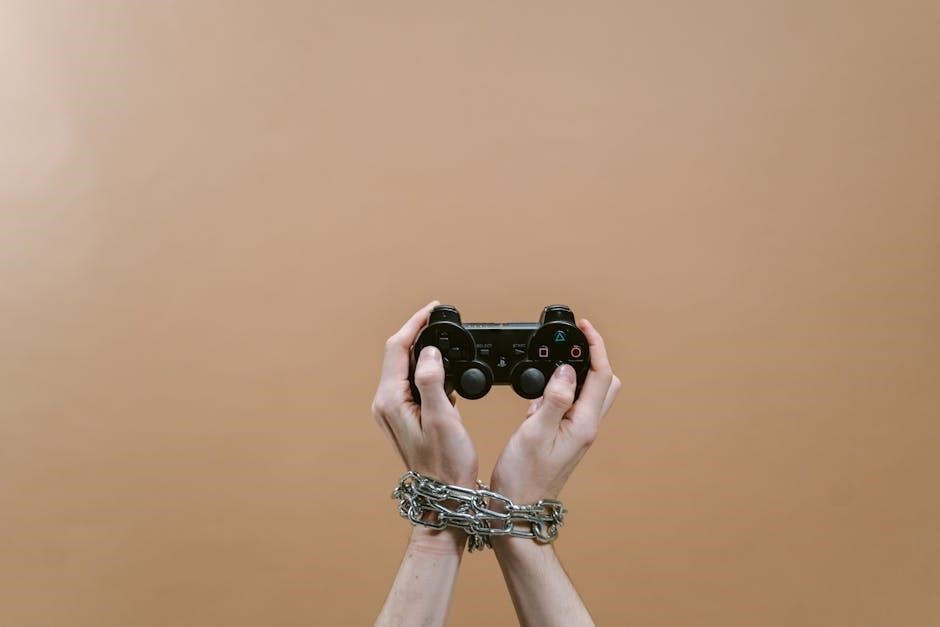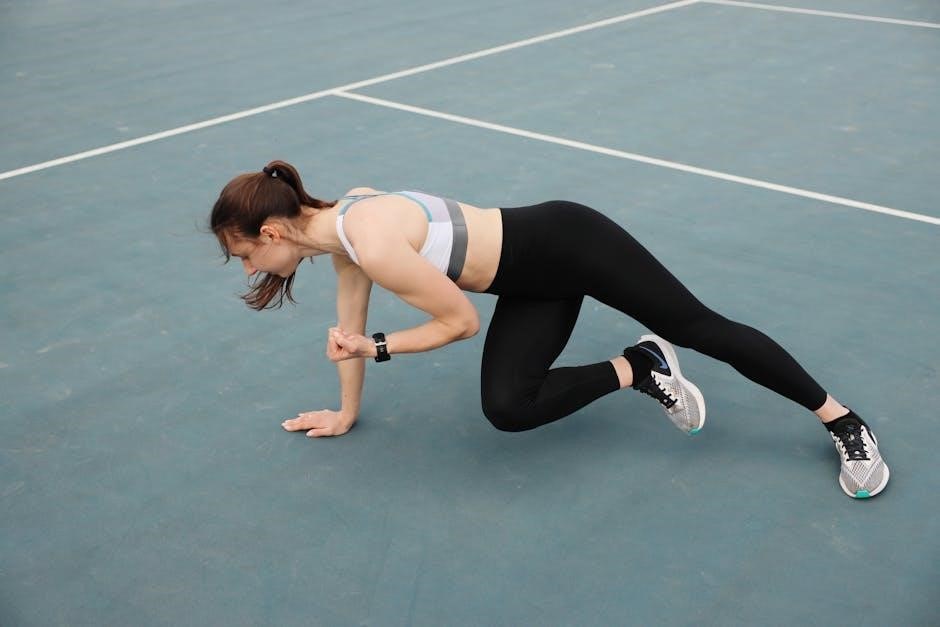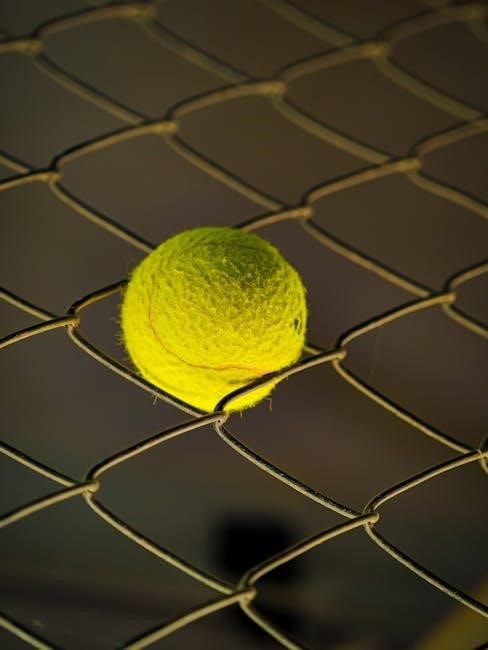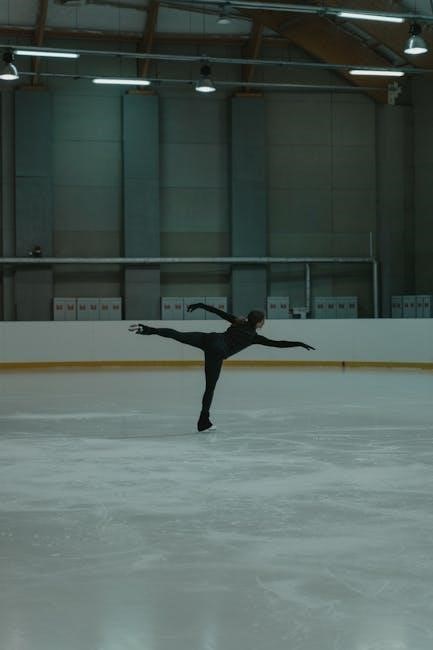Peroneal nerve entrapment involves compression of the peroneal nerve, causing symptoms like foot drop, weakness, and numbness. Exercises play a crucial role in managing and recovering from this condition.
1.1 Overview of Peroneal Nerve Entrapment
Peroneal nerve entrapment occurs when the peroneal nerve is compressed, often near the fibular head or knee. It leads to symptoms like foot drop, ankle weakness, and numbness along the nerve’s path. Exercises, such as stretching and strengthening routines, are essential for managing symptoms and improving mobility. Early intervention, including physical therapy and activity modification, can prevent progression and reduce discomfort, especially in chronic cases.
1.2 Importance of Exercises in Management
Exercises are crucial in managing peroneal nerve entrapment, aiding in symptom relief and recovery. Stretching, strengthening, and nerve mobility exercises improve flexibility, reduce muscle weakness, and enhance nerve function. These routines also promote blood flow and prevent further nerve damage. Regular exercise helps restore ankle dorsiflexion and eversion, addressing foot drop and numbness. Tailored programs, guided by professionals, can accelerate healing and reduce the need for invasive treatments, making them a cornerstone of non-surgical management.

Understanding the Anatomy of the Peroneal Nerve
The peroneal nerve, branching from the sciatic nerve, controls leg muscles and sensation. It runs near the fibular head, a common site for entrapment, affecting ankle movements.
2.1 Location and Function of the Peroneal Nerve
The peroneal nerve originates from the sciatic nerve and descends along the lower extremity. It is located near the fibular head, where it splits into deep and superficial branches. This nerve is responsible for controlling muscles involved in ankle dorsiflexion and eversion, as well as providing sensory input to the lateral leg and foot. Its location near the fibula makes it susceptible to compression, which can impair its function and lead to motor and sensory deficits.
2.2 Common Areas of Entrapment
The peroneal nerve is commonly entrapped near the fibular head, where it is superficial and vulnerable to compression. Activities involving repetitive knee flexion or prolonged pressure on the nerve, such as cycling or tight footwear, can exacerbate entrapment. The nerve may also be compressed at the ankle, where it branches, leading to symptoms in the lateral leg and foot. Understanding these common entrapment areas is crucial for effective management and exercise-based rehabilitation strategies.
Common Symptoms of Peroneal Nerve Entrapment
Common symptoms include foot drop, weakness in ankle movements, and numbness or tingling along the nerve path. Pain may worsen with activity, affecting the lateral leg and foot.
3.1 Foot Drop and Weakness in Ankle Movements
Foot drop, a hallmark symptom, involves difficulty lifting the foot at the ankle, often causing a dragging gait. Weakness in ankle dorsiflexion and eversion is common, impairing mobility. Patients may struggle with walking on uneven surfaces or climbing stairs. These symptoms stem from impaired peroneal nerve function, affecting muscle control. Early intervention, including specific exercises like resisted eversion and dorsiflexion, can help mitigate these issues and improve functional outcomes.
3.2 Numbness and Tingling Along the Nerve Path
Numbness and tingling are common symptoms of peroneal nerve entrapment, often felt along the lateral leg and top of the foot. These sensations occur due to nerve compression, disrupting normal sensory transmission. Patients may experience paresthesia, particularly after prolonged activity or at night. These symptoms can significantly impact daily activities and mobility. Addressing them through targeted exercises and stretches is crucial to alleviate discomfort and restore nerve function effectively.
Causes and Risk Factors
Trauma, repetitive motion, and overuse are common causes of peroneal nerve entrapment. Anatomical abnormalities and direct injury to the leg or foot also increase the risk of developing this condition.
4.1 Trauma or Direct Injury to the Leg
Trauma or direct injury to the leg can cause peroneal nerve entrapment by compressing or damaging the nerve. This may result from fractures, blunt force, or sharp injuries. Symptoms often include foot drop, numbness, and weakness in ankle movements. Immediate medical attention is crucial to prevent long-term nerve damage. Exercises and physical therapy are commonly recommended to aid recovery and restore nerve function, especially in cases where trauma has led to entrapment.
4.2 Repetitive Motion and Overuse
Repetitive motion and overuse can lead to peroneal nerve entrapment by causing inflammation and irritation around the nerve. Activities like running or cycling, which involve repetitive leg movements, can contribute to this condition. Overuse may result in swelling or scar tissue formation, compressing the nerve. This often leads to symptoms such as foot drop, weakness, and numbness. Addressing repetitive stress through rest and targeted exercises is essential to prevent further nerve damage and promote recovery.
4;3 Anatomical Abnormalities
Anatomical abnormalities, such as tight peroneal muscles or scar tissue near the fibular head, can compress the peroneal nerve. These structural issues may lead to chronic nerve entrapment, especially if muscle imbalances in the lower leg exist. Such abnormalities can make the nerve more susceptible to irritation during physical activity, exacerbating symptoms like foot drop and numbness. Addressing these anatomical issues through targeted exercises and physical therapy is crucial for effective management and recovery.
Importance of Early Diagnosis
Early diagnosis of peroneal nerve entrapment is critical to prevent chronic damage and improve recovery outcomes. Prompt identification of symptoms like foot drop and numbness ensures timely intervention, reducing the risk of prolonged disability or surgical intervention. Delayed diagnosis can lead to irreversible nerve damage, emphasizing the need for swift clinical evaluation and testing to confirm the condition early. This ensures effective management strategies are implemented sooner, enhancing recovery prospects significantly.
5.1 Clinical Examination and Symptoms
Clinical examination for peroneal nerve entrapment involves assessing muscle strength, sensation, and reflexes. Symptoms include foot drop, weakness in ankle dorsiflexion and eversion, and numbness along the nerve’s path. Physicians may perform tests like the Tinel’s sign or nerve conduction studies to confirm compression. Early identification of these signs ensures timely intervention, preventing further nerve damage and improving recovery outcomes. Accurate diagnosis is essential for developing effective treatment plans tailored to the patient’s condition.
5;2 Diagnostic Tests for Confirmation
Diagnosis of peroneal nerve entrapment often involves nerve conduction studies, electromyography (EMG), and MRI scans to visualize nerve compression. Tinel’s sign, where light tapping over the nerve elicits tingling, may also be assessed. These tests help confirm nerve entrapment and rule out other conditions. Clinical correlation of symptoms with imaging and electrodiagnostic findings ensures an accurate diagnosis, guiding appropriate treatment strategies and exercise programs to alleviate symptoms and improve nerve function.

Treatment Options Overview
Treatment for peroneal nerve entrapment includes non-surgical approaches like rest, exercises, and physical therapy. Severe cases may require surgical intervention to relieve nerve compression.
6.1 Non-Surgical Management Strategies
Non-surgical approaches are often the first line of treatment for peroneal nerve entrapment. These include rest, activity modification, and specific exercises to alleviate symptoms. Stretching exercises, such as the peroneal muscle stretch and towel inversion stretch, can improve flexibility and reduce nerve compression. Strengthening exercises, like resisted eversion and ankle weight-bearing exercises, help restore muscle support and function. Physical therapy programs may also incorporate nerve mobility techniques to enhance recovery and prevent further entrapment.
6.2 Surgical Intervention for Severe Cases
Surgical intervention is considered for severe cases of peroneal nerve entrapment where non-surgical methods fail to relieve symptoms. Surgery typically involves decompression of the compressed nerve to restore function and alleviate pain. Procedures may include nerve release or transposition to prevent further entrapment. Post-surgical rehabilitation focuses on restoring strength and mobility through targeted exercises, ensuring optimal recovery and minimizing recurrence. Early physical therapy is crucial for achieving full functional recovery after surgery.

Non-Surgical Management of Peroneal Nerve Entrapment
Non-surgical management focuses on rest, activity modification, and exercises to alleviate symptoms. Stretching, strengthening, and nerve mobility exercises are essential for improving function and reducing discomfort.
7.1 Rest and Activity Modification
Rest and activity modification are crucial initial steps in managing peroneal nerve entrapment. Avoiding activities that worsen symptoms, such as repetitive ankle movements or prolonged standing, is essential. Relative rest helps reduce nerve irritation, while supportive devices like braces or orthotics can alleviate strain. Incorporating low-impact exercises and gradually returning to normal activities ensures proper healing without overloading the nerve.
7.2 Physical Therapy and Exercise Programs
Physical therapy is a cornerstone in treating peroneal nerve entrapment. Tailored exercise programs focus on improving nerve mobility, strengthening peroneal muscles, and enhancing flexibility. Techniques include stretching exercises like peroneal stretches, towel inversion stretches, and hamstring stretches. Strengthening exercises, such as resisted eversion and ankle weight-bearing, target muscle support. Additionally, nerve gliding exercises promote nerve mobility, reducing entrapment symptoms. These exercises are designed to restore function and prevent further nerve damage, ensuring a comprehensive recovery approach.
Role of Physical Therapy in Recovery
Physical therapy enhances recovery by improving nerve function, reducing symptoms, and restoring muscle strength and flexibility through targeted exercises and mobility techniques.
8.1 Stretching Exercises for Flexibility
Stretching exercises are essential for improving flexibility and reducing tension around the peroneal nerve. Techniques like the towel inversion stretch and hamstring stretch help elongate tight muscles. These exercises promote better nerve mobility and relieve compression. Regular stretching can also enhance blood flow to the affected area, supporting healing and reducing stiffness. Consistency is key to achieving long-term flexibility and preventing recurrence of symptoms. Always perform stretches gently to avoid further irritation.
- Towel inversion stretch: Targets the peroneal muscles and ankle.
- Hamstring stretch: Reduces tension in the lower extremities.
8.2 Strengthening Exercises for Muscle Support
Strengthening exercises are vital for supporting muscles affected by peroneal nerve entrapment. Resisted eversion exercises target the peroneal muscles, improving ankle stability. Ankle weight-bearing exercises enhance dorsiflexion and eversion strength, while toe raises strengthen the anterior tibialis. These exercises help restore muscle balance, reduce weakness, and improve functional mobility. Consistent practice can prevent atrophy and promote nerve recovery. Always use resistance bands or light weights to avoid overexertion.
- Resisted eversion: Strengthens peroneal muscles.
- Ankle weight-bearing: Enhances dorsiflexion and eversion.
- Toe raises: Targets the anterior tibialis muscle.
8.3 Nerve Mobility Techniques
Nerve mobility techniques are essential for improving the glide and function of the peroneal nerve. Sciatic nerve flossing and peroneal nerve gliding exercises are commonly used. These exercises involve gentle movements to reduce nerve tension and enhance circulation. Perform them slowly to avoid triggering symptoms. Regular practice can improve neural mobility, reduce stiffness, and promote recovery. These techniques are often combined with stretching and strengthening exercises for optimal results.
- Sciatic nerve flossing: Enhances nerve glide.
- Peroneal nerve gliding: Improves nerve mobility.

Stretching Exercises for Peroneal Nerve Entrapment
Stretching exercises, such as peroneal muscle stretch, towel inversion stretch, and hamstring stretch, help improve flexibility and reduce tension on the peroneal nerve, enhancing recovery.
- Peroneal muscle stretch: Targets the peroneal muscles.
- Towel inversion stretch: Uses a towel for assistance.
- Hamstring stretch: Improves lower limb flexibility.
9.1 Peroneal Muscle Stretch
The peroneal muscle stretch targets the muscles surrounding the peroneal nerve, improving flexibility and reducing tension. Sit on the floor with your affected leg crossed over your other thigh. Loop a towel around the foot of the crossed leg and gently pull it toward your chest. Hold for 30 seconds, then switch legs. Repeat 2-3 times daily to enhance nerve mobility and alleviate symptoms.
9.2 Towel Inversion Stretch
The towel inversion stretch targets the peroneal muscles and ankle joint. Sit on the floor with your leg straight, loop a towel around your foot, and gently pull inward. Hold for 30 seconds, then release. Repeat 3-4 times. This stretch improves ankle mobility and reduces peroneal muscle tightness. Perform daily to enhance flexibility and alleviate symptoms associated with peroneal nerve entrapment. Avoid overstretching to prevent discomfort.
9.3 Hamstring Stretch
The hamstring stretch helps improve flexibility in the posterior thigh, which can indirectly support peroneal nerve mobility. Sit at the edge of a chair, extend one leg, and point your toes upward. Keep the other knee bent for stability. Lean forward slightly until you feel a gentle stretch in the back of your thigh. Hold for 30 seconds and repeat 2-3 times daily. This exercise enhances lower limb flexibility and reduces muscle tightness, aiding in symptom relief for peroneal nerve entrapment.

Strengthening Exercises to Target Peroneal Muscles
Strengthening the peroneal muscles is essential for restoring stability and function. Key exercises include:
- Resisted Eversion Exercises: Strengthen the muscles controlling ankle movement.
- Ankle Weight-bearing Exercises: Enhance strength and balance.
- Toe Raises and Dorsiflexion Strengthening: Improve ankle mobility and muscle support.
10.1 Resisted Eversion Exercises
Resisted eversion exercises target the peroneal muscles, improving strength and stability. Sit with legs extended, loop a resistance band around the foot, and push the sole outward. Perform 3 sets of 10-15 repetitions. Focus on controlled movements to avoid strain. This exercise enhances ankle eversion, crucial for preventing foot drop and restoring normal gait mechanics. Gradually increase resistance as strength improves.
10.2 Ankle Weight-bearing Exercises
Ankle weight-bearing exercises strengthen the muscles around the ankle, improving stability and reducing symptoms. Stand on a flat surface, slowly rising onto tiptoes and holding for 5-10 seconds. Repeat for 3 sets of 10-12 repetitions. For added resistance, wear light ankle weights or use a resistance band. Focus on controlled movements to engage the peroneal muscles and tibialis anterior. Progress gradually to single-leg exercises for enhanced balance and strength.
10.3 Toe Raises and Dorsiflexion Strengthening
Toe raises and dorsiflexion exercises target the muscles responsible for ankle movements, particularly the peroneal muscles. Sit or stand and lift your toes upward, holding for 5 seconds. Perform 3 sets of 10-15 repetitions. Progress by adding resistance with a band or weights. This strengthens the anterior tibialis and peroneal muscles, improving dorsiflexion and reducing foot drop symptoms. Focus on slow, controlled movements to maximize muscle engagement and recovery.

Nerve Mobility and Flossing Techniques
Nerve mobility and flossing techniques improve peroneal nerve function by enhancing flexibility and reducing tension. Sciatic nerve flossing and peroneal nerve gliding exercises are commonly recommended. Perform slow, controlled movements to avoid aggravating symptoms.
11.1 Sciatic Nerve Flossing
Sciatic nerve flossing is a technique to improve nerve mobility and reduce tension. Lie on your back, hold the affected knee, and gently pull it toward your chest. Slowly straighten your leg while keeping the knee bent, then return to the starting position. Repeat 10-15 times, ensuring smooth, controlled movements. This exercise helps alleviate pressure on the peroneal nerve by enhancing sciatic nerve flexibility. Avoid rapid movements, as they may worsen symptoms. Stop if pain occurs.
11.2 Peroneal Nerve Gliding Exercises
Peroneal nerve gliding exercises aim to improve nerve mobility and reduce tension. Start by lying on your back, then gently lift your leg while keeping the knee straight. Slowly lower your leg and repeat for 10-15 repetitions. These exercises help maintain nerve flexibility and prevent further entrapment. Perform them smoothly, avoiding jerky movements, to enhance comfort and promote recovery. Regular practice can alleviate symptoms and support overall nerve health.

Post-Surgical Rehabilitation Exercises
Post-surgical rehabilitation involves gentle exercises to restore strength and mobility. Focus on gradual progression, ensuring exercises are tailored to individual recovery needs for optimal outcomes.
12.1 Early Mobilization Techniques
Early mobilization after surgery focuses on restoring movement and strength without overloading the nerve. Gentle exercises, such as towel inversion stretches and seated ankle pumps, are often recommended. These techniques help improve circulation, reduce stiffness, and promote healing. It’s important to avoid pain during exercises and gradually progress based on tolerance. Physical therapy guidance ensures safe and effective rehabilitation, fostering optimal recovery and return to normal function.
